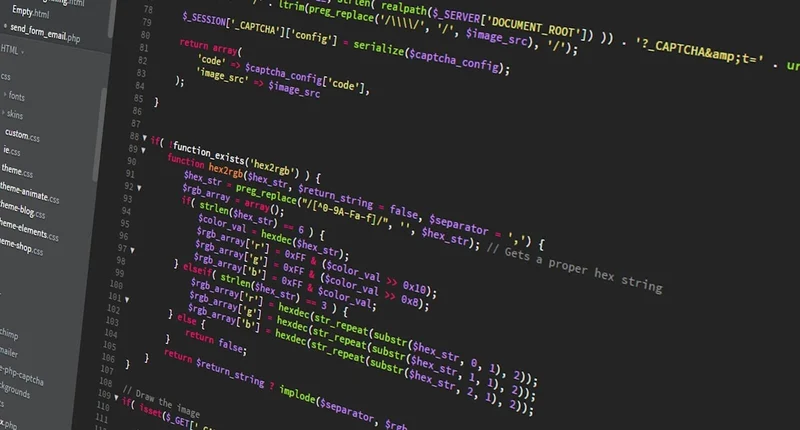Everything You Should Know About PHP Const in Class
PHP is one of the major options that constantly come up when developers and business owners are looking for the best possible options to develop websites. It’s a top option because of the unique benefits that distinguish it from other scripting languages.
PHP, an acronym for Hypertext Preprocessor, is an open-source scripting language designed to serve a general purpose and works perfectly for web development like static websites, web applications, or dynamic websites. PHP has many features including the PHP const in class, and frameworks like Laravel and CodeIgniter, all of which make up some of the pros and cons of using PHP as a tool in your web development process.

PHP has different functions as a free and cross-platform scripting language. These include data encryption, control of user access, creation of dynamic page contents, form data collection, sending and receiving cookies, and modifying data in a database.
The best thing is that PHP freelancers and remote development teams constantly vouch for the benefits of PHP, and that's primarily because it runs on different platforms such as Windows, Linus, and Mac Os. It's also compatible with a lot of the servers used to create websites today.
One of the widely used features of PHP is the PHP const, especially in Class. But what do PHP const and class mean? This article will provide an in-depth insight into everything you should know about PHP Const in Class, and PHP in general.
What is a PHP Const?
Certain features are constant across different programming and scripting languages; some are classes, constants, and variables. Starting with variables, in PHP, they function as placeholders for storing information in the middle of a PHP program. The value of the variable is the value of the most recent assignment. Denoted with a leading dollar sign ($), there are eight types of variables, and one of them is Constants.
A Const, also known as a constant, in PHP is a variable that serves as an identifier for a simple value on a PHP script. Constant values have a special feature that makes them stand out compared to variables. You can never change constant values while executing the script while it runs. A PHP Const, however, follows the same rules as PHP variables.
How is a PHP Const defined?
Just like a PHP variable, a PHP Const has to be declared or defined to be run on the script. There are two major ways to define a PHP constant. The first one is using the define () function. You can use the define () to define constants at run time. The function runs like this:
define (name, value).
The “name” in this function is case-sensitive. So, you can only declare the name of a constant when you start with a capital letter or an underscore.
An example of this can be seen below:
The second way to define a PHP Constant is by using the const keyword. This is the more common method. The const keyword defines constant when it's compile time. As a result, it's not a function, just a PHP language construct. Every constant defined using the const keyword is case-sensitive.
An example of this is:
PHP Constants have multiple use cases in a script. One of the places you can use constants in PHP is in class declarations.
What is a PHP Class?
You must understand what PHP functions are to understand a class in PHP. Functions are blocks of statements that are used repeatedly in a program. Executed by calling the function, a PHP function provides code that takes an input as a parameter, processes it when called, and returns a value. A function name must start with a letter or an underscore. However, unlike constants, they're not case-sensitive. It serves as a blueprint and template for the objects and instances of the class."
A PHP Class, on the other hand, serves as a blueprint and template for the objects and instances of the class. A PHP class is object-oriented and used as a message form for functions and other objects. You can also use PHP Classes to describe entities with defined properties and behaviors. A class is a container of variables and functions which come together to form an object.

One of the most popular uses of Classes in PHP is their ability to group related behaviors, states, or objects. Classes are a form of declaration of objects. Objects in PHP are compound data types that allow you to store values of different types in a single variable. So, variables, including constants, are commonly used in PHP Classes. A class can have its constants, variables, and functions.
PHP Classes can be declared by starting with the keyword "class", then a class name, and a pair of curly brackets that contain the definition of the methods and properties that belong in the class.
Here's an example of a class definition in PHP:
// method declaration
public function displayVar() {
echo $this->var;
}
}
?>
PHP Const in Class
Now that you know what a PHP constant is and how PHP Class works, let’s move to the dynamic behind PHP Const in Class. The use of constants in the PHP class is pretty simple. A class constant is a constant declared within a PHP class. Unlike regular constants — which can easily be declared using the define () function or the const keyword — there is only one way to declare a constant in a PHP class. The const keyword only is used to declare a class constant in PHP, right inside the curly brackets of the class definition. Here is an example of what it should look like:
How to access Class Constants in PHP
There are two different ways to access a class constant in PHP. The method of choice depends on whether the class constant is accessed inside or outside the class.
- Accessing a class constant inside a class
Defining a constant in a class means the constant is specific to just that class. As a PHP Const in class is defined per class and not per instance of the class, you have to reference the constant in the class. You’d have to use the self keyword to do this. Using the self keyword, followed by the scope resolution operator (::) and the constant name is the way to access a class constant inside the class. Here is an example of how it works.
const GREET = 'Hello Engineer!';
public function welcome(){
echo self::GREET;
}
}
// Access const class
$val = new code();
$val->welcome();
?>
- Accessing a class constant outside a class
To access a class constant in PHP outside the class, you have to use the class name, then the scope resolution operator (::), and then the constant name. However, the only reason it's possible to do this is that constants are public in visibility by default. Here is an example of how it works:
// Test class
// ...
echo Test::GREET;
?>
Yes, it’s that simple to work with constants inside and outside of a class. PHP is a very straightforward scripting language, and this is one of the reasons the future of PHP engineering is promising. The application of PHP goes beyond just constants and classes. However, this article has undoubtedly given you detailed insights into PHP constants, classes, and Class constants work. You can also maximize your users' web experience with the help of a trusted remote development team that you can hire in 72 hours.
FAQs:
Q1: Can we use const in PHP?
Yes, the const keyword is usable in PHP. Constants are a necessary feature in the PHP scripting language. You can use the const keyword to declare a constant in a PHP script. It's also used specifically when trying to declare a class constant inside the class. The PHP script recognizes the const keyword inside and outside of a class definition.
Q2: What is a class constant?
Simply put, a class constant is a constant declared inside a class. This class constant is defined specifically for the class in question. This class constant, regardless of the class it is in, is unchangeable as soon as it is declared. It's also case-sensitive as it's different from normal variables. A class constant has a default public visibility. You can use class constants in PHP to declare constant data within a class.
Q3: Where do you place a constant?
A constant can be placed anywhere that needs a constant value within a PHP script. You can place it inside or outside a class depending on the aim and usage of the constant. A constant placed inside a class is known as a class constant in PHP. You can also hire a team of web developers to help with your web development challenges to place constants where they should be.
